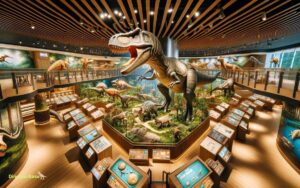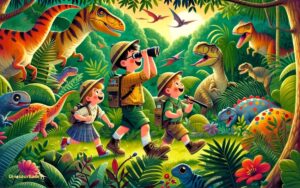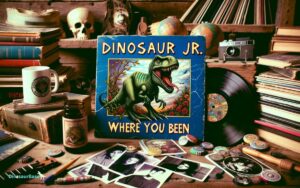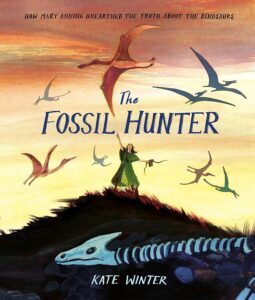How to Differentiate Between a Turtle And a Dinosaur
To differentiate a turtle from a dinosaur, examine their physical form and era of existence. Turtles possess shells and are modern reptiles, while dinosaurs are extinct and were often larger with diverse body structures.
Understanding the distinctions between turtles and dinosaurs is essential for both enthusiasts of ancient life and wildlife observers. Turtles, members of the order Testudines, are easily identified by their bony or cartilaginous shells.
These creatures are alive today, thriving in a variety of environments including oceans, freshwater, and terrestrial habitats.
Dinosaurs, on the other hand, roamed the earth millions of years ago during the Mesozoic Era and are known only through fossils.
They showcased a vast array of forms, from the towering long-necked sauropods to the fierce carnivorous theropods.
The confusion usually stems from prehistoric-looking turtles that may seem dinosaur-like, but by noting their distinct characteristics and recognizing the turtles’ ongoing presence on earth, one can clearly distinguish between the two.
This foundational knowledge enables better appreciation and understanding of these remarkable animals and their evolutionary journeys.
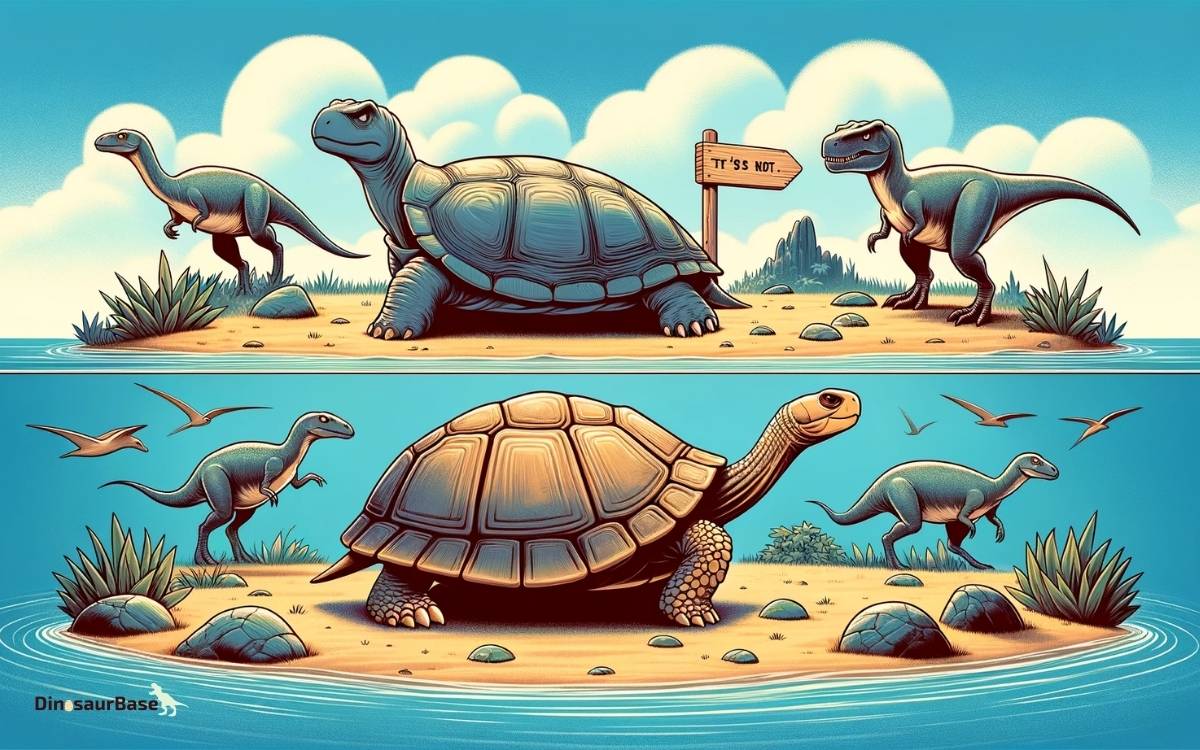
Physical Traits: Shell Vs. Scales
The animal kingdom is full of diverse creatures, each with unique characteristics. Among them, turtles and dinosaurs stand out for their remarkable physical features.
When distinguishing between the two, one must observe the presence of a shell or scales. These traits are not just distinctive markers but are also tied to their ecological roles, survival strategies, and evolutionary history.
The Turtle’s Shell: A Distinctive Feature
Turtles possess a unique trait unlike any other creature: a hard shell. This shell consists of two parts – the carapace on the back and the plastron on the belly.
These components are made of bony structures covered by scutes, which are made of keratin, the same material in human nails.
- Carapace: the top dome-shaped section
- Plastron: the flat, underbelly part
- Scutes: keratin layers that protect the shell
Dinosaur Scales And Skin Texture
Dinosaurs displayed a different skin composition, primarily featuring scales. Their skin texture varied among species, with some having fine, small scales, while others boasted armored plates or even ostéoderms embedded in the skin.
Paleontologists use fossil imprints to study these prehistoric textures, providing a glimpse into their diverse appearances.
| Dinosaur Type | Skin Texture |
|---|---|
| Theropods | Fine scales |
| Sauropods | Large, bumpy scales |
| Ankylosaurs | Armored plates |
Size And Stature Comparison
When comparing turtles and dinosaurs, size tells an impressive story. These creatures both roamed our earth, yet their physical presence differed greatly. Let’s explore the fascinating world of these ancient beings through the lens of their size and stature.
Average Sizes Of Turtles
Turtles come in various shapes and sizes, often fitting in the palm of your hand. Some are slightly bigger, akin to a basketball.
Here’s a quick look at their average sizes:
- Small Turtles: Often measure around 4-8 inches in length.
- Medium Turtles: Can grow to be about 12 inches.
- Large Turtles: Some species may reach up to 6 feet.
The Monumental Scale Of Dinosaurs
Dinosaurs, on the other hand, were true giants of their time. Their sizes were as diverse as their forms.
| Dinosaur Type | Length | Height |
|---|---|---|
| Velociraptor | 6-7 feet | 1.6 feet |
| Triceratops | 26-30 feet | 9.8 feet |
| Tyrannosaurus Rex | 40 feet | 12-20 feet |
These gigantic reptiles dwarf even the largest turtles from both past and present. Their sheer magnitude continues to astonish scientists and enthusiasts alike.
Habitat: Ancient Worlds Apart
Delve into the mesmerizing habitats of two distant eras – the age of turtles and dinosaurs. Distinct environments tell the story of how each species thrived in their respective timelines. Uncover the ancient worlds in which these creatures roamed, swam, and ruled.
Turtles’ Aquatic And Terrestrial Homes
Turtles, with their hard shells and webbed feet, offer us a glimpse into a variety of habitats. Some of the places they called home include:
- Oceans: Marine turtles glided through the salty waves.
- Rivers and Lakes: Freshwater species preferred calm waters.
- Beaches: Sandy shores served as nesting grounds.
- Forests: Land-dwelling turtles roamed the leafy underbrush.
Dinosaurs’ Dominance Of Prehistoric Lands
Dinosaurs, the colossal inhabitants of prehistoric times, ruled over diverse landscapes. These mighty creatures could be found in:
| Environment Type | Examples of Dinosaurs |
|---|---|
| Forests | Stegosaurus |
| Deserts | Velociraptor |
| Plains | Triceratops |
| Swamps | Spinosaurus |
Dinosaurs adapted to these areas with features like massive size and fierce claws, showcasing their supreme reign over the ancient world.
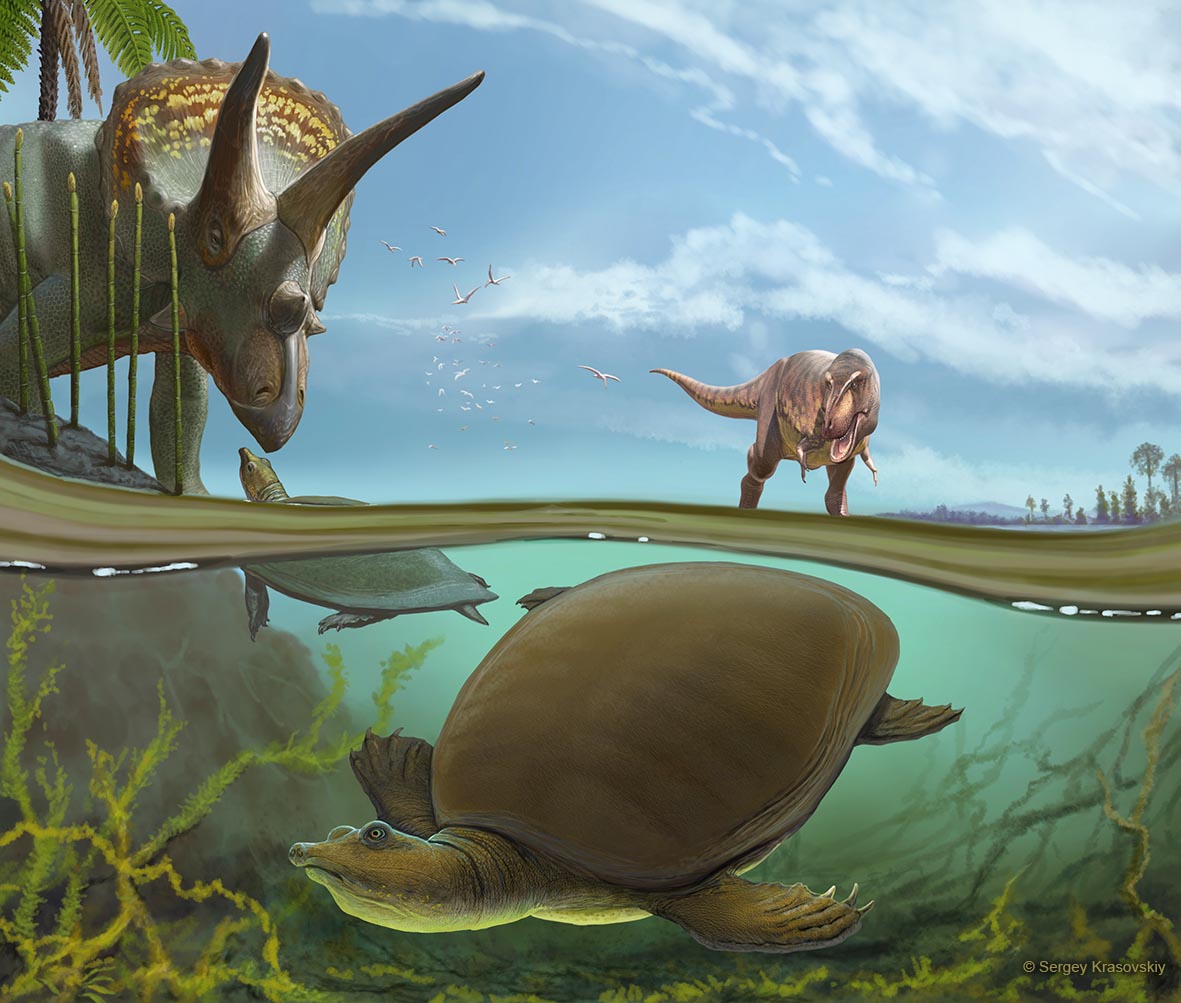
Behavioral Characteristics
Understanding the behavioral characteristics of animals can reveal a lot about their nature and daily habits.
When differentiating a turtle from a dinosaur, behavior plays a key role. Turtles exhibit distinctive lifestyles, while dinosaur behavior, though not directly observable, has been inferred from the fossil record to be varied and complex.
Turtle Lifestyles: Slow And Steady
Turtles are known for their calm and enduring pace in all their activities. We’ll look at several aspects of their lifestyle:
- Life in Slow Motion: Turtles take their time to move and feed.
- Conservative Energy Use: They maintain low metabolism, which reduces their energy usage.
- Longevity and Endurance: Some turtles live for decades, often outlasting much of the surrounding fauna.
- Basking for Warmth: Turtles enjoy sunbathing to regulate their body temperature.
- Mating and Nesting Rituals: Mating behaviors are seasonal and often involve delicate courtship.
Dinosaur Behavior: Varied And Complex
Dinosaurs exhibited a range of behaviors similar to modern birds and reptiles:
| Behavior | Description |
|---|---|
| Hunting Techniques | Predatory dinosaurs used complex strategies to capture prey. |
| Social Interactions | Many traveled in packs, showing advanced social structures. |
| Care for Offspring | Evidence suggests some dinosaurs tended their nests much like birds. |
| Diverse Diets | Herbivores, carnivores, and omnivores were all present in the dinosaur kingdom. |
| Territorial Displays | Some dinosaurs had physical features ideal for intimidating rivals. |
Fossil Records And Evolutionary Clues
Exploring the ancient world through fossil records reveals astonishing details. Fossils serve as a gateway.
They allow us to peek into the lives of creatures from different eras. Among these creatures, turtles and dinosaurs stand out.
They lived millions of years apart. Yet, they left behind clues. These clues help us understand their evolution.
Interpreting Turtle Fossils
Turtle fossils are like time capsules. They offer snapshots of the past. To spot a turtle fossil, look for unique features:
- Shell patterns: Distinct, bony plates are key indicators.
- Webbed footprints: Tracks in old sediment point to aquatic habitats.
- Skull shape: Turtles have beak-like jaws without teeth.
Turtle evolution is fascinating. These fossils have changed little over time. This suggests turtles are successful survivors from an ancient lineage.
Tracing Dinosaur Evolution Through Paleontology
Dinosaurs evoke wonder and curiosity. Paleontology deciphers their history. Notable fossils include:
| Dinosaur Type | Fossil Feature |
|---|---|
| The Predators | Sharp teeth and claws indicate hunting traits. |
| The Giants | Large leg bones support massive bodies. |
| The Flyers | Wing bones show relations to modern birds. |
Each dinosaur fossil leads to new discoveries. They help us trace changes over time. This paints a broader picture of their existence and extinction.

Credit: www.newscientist.com
Modern Descendants And Living Relatives
Understanding the past often involves looking at the creatures around us today. Many animals have ancient roots that can tell us a lot about life millions of years ago.
In this section, we will dive into the modern descendants and living relatives of turtles and dinosaurs, and find out what they have in common with their prehistoric ancestors.
Turtles’ Lineage And Current Species
Turtles are fascinating creatures with a long history. Their journey begins over 200 million years ago.
Turtles have witnessed the rise and fall of dinosaurs, surviving mass extinctions and adapting over time.
Today’s turtles vary in size and habitat. While all turtles share a common shelled ancestor, they now fill many ecological niches across the globe. From the enormous leatherback sea turtle to the petite bog turtle, this lineage is diverse.
- Leatherback Sea Turtle – The largest of all living turtles.
- Bog Turtle – One of the smallest turtle species.
- Red-Eared Slider – Common in pet trade.
- Galápagos Tortoise – Known for its large size and long lifespan.
Linking Birds To Dinosaurs
Did you know that birds are dinosaurs’ closest living descendants? The link between birds and dinosaurs strengthens with each new discovery. This connection reshaped our understanding of these incredible creatures.
The evolution from velociraptors to robins might seem vast, but many traits connect these animals. Feathers, egg-laying practices, and similar bone structures are among these shared characteristics.
| Bird Feature | Dinosaur Counterpart |
|---|---|
| Wishbone | Theropods like T-Rex |
| Hollow Bones | Many carnivorous dinosaurs |
| Feathers | Recent fossil findings in theropods |
From pigeons strutting in the city squares to eagles soaring high above the mountains, birds keep the dinosaur legacy alive. Their survival speaks to the resilience and adaptability of life on Earth.

Credit: www.ctvnews.ca
Frequently Asked Questions On How To Differentiate Between A Turtle And A Dinosaur
Do Turtles Look Like Dinosaurs?
Turtles share some prehistoric features with dinosaurs, such as scaly skin and reptilian shapes, but they are not dinosaurs. Turtles belong to the Testudines order, which is separate from the dinosaur clades.
What Is A Feature That Distinguishes Dinosaurs From Reptiles?
Dinosaurs are distinguished from other reptiles by their upright stance, with legs positioned directly beneath their bodies.
What Is The Main Difference Between Dinosaurs And Reptiles?
The main difference is that dinosaurs are a distinct group of extinct reptiles with characteristics like upright stances, which most other reptiles, still living today, do not share.
How Do We Know Dinosaurs Were Reptiles?
Dinosaurs are classified as reptiles due to their scaly skin, egg-laying habits, and cold-blooded metabolism. Their skeletal structure also shares characteristics with modern reptiles.
Conclusion
Distinguishing turtles from dinosaurs can be a captivating quest. We’ve delved into their unique features, from shell characteristics to fossil records.
As enthusiasts in paleontology and herpetology, or simply as curious minds, recognizing these differences enriches our understanding of ancient and modern creatures.
Keep these insights in mind during your next natural history adventure. Embrace the knowledge and share the wonder of these remarkable animals with others.

